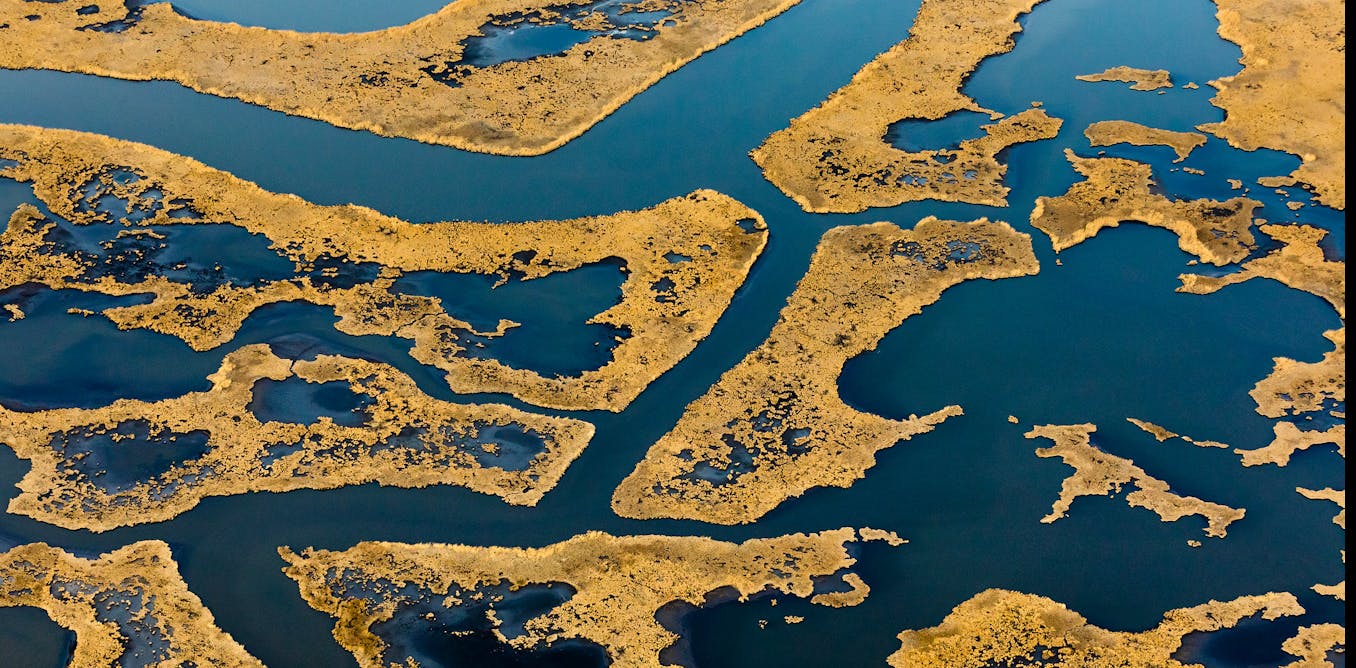Coastal wetlands can’t keep pace with sea-level rise, and infrastructure is leaving them nowhere to goI have been studying coastal geology and...
Published on by Water Network Research, Official research team of The Water Network

I have been studying coastal geology and wetlands for more than 40 years. The rates of sea-level rise that we’re seeing now mean portions of today’s coastal wetland ecosystems will be lost to the ocean in the years and decades to come at a tempo never seen before.
Wetland plants were able to keep pace in the past
The presence of expansive wetlands along the coasts is in large part because sea level has been relatively stable for millennia.
Wetland plants could easily adapt to small changes in the ocean level because those changes were typically less than 1 millimeter per year. The plants naturally create or trap sediment, building elevation to keep up with rising seas. Wetland ecosystems are also adept at migrating horizontally and therefore could colonize areas of the coastline that were slowly flooded over time.
However, the world’s climate began to change about a century and a half ago. Fossil fuel combustion in factories and vehicles sent increasing amounts of carbon dioxide into the atmosphere, raising global temperatures. This also warmed the oceans, causing them to expand, and accelerated the melting of glaciers and ice sheets. The combination of thermal expansion of seawater and melting land ice has added volume to the ocean, causing sea level to rise at ever-faster rates.
Three charts show thermal expansion as the highest contributor to sea level rise so far
Contributors to sea-level rise. Climate.gov
Water level data collected by the National Oceanic and Atmospheric Administration at gauges distributed along the U.S. coast indicates the average rate of sea-level rise is now about 10 millimeters per year – much faster than in the past – and it is expected to continue accelerating. During the second half of the 21st century, scientists expect sea-level rise to average about 30 millimeters per year. That’s 30 times faster than it was rising before the Industrial Revolution.
Sea level is rising faster than wetlands can adapt
The rates of sea-level rise along the mid-Atlantic and southeastern U.S. coasts are now faster than most coastal wetland plant communities can build elevation.
Within decades, it is very likely that much of these crucial ecosystems will drown. Areas once occupied by a lush, expansive and contiguous coastal wetland ecosystem will, over time, become riddled with small, isolated ponds that enlarge, interconnect and eventually transform to open seawater.
A view across a marsh with tall grasses, open expanses of water and trees in the background, include many dead trees at the edge of the forest.
Trees are becoming a ghost forest in parts of the Blackwater National Wildlife Refuge, where sea-level rise and land subsidence are raising water levels. Ataraxy22 via Wikimedia, CC BY-SA
Attached link
https://theconversation.com/coastal-wetlands-cant-keep-pace-with-sea-level-rise-and-infrastructure-is-leaving-them-nowhere-to-go-226851Taxonomy
- Wetlands
- Constructed Wetlands